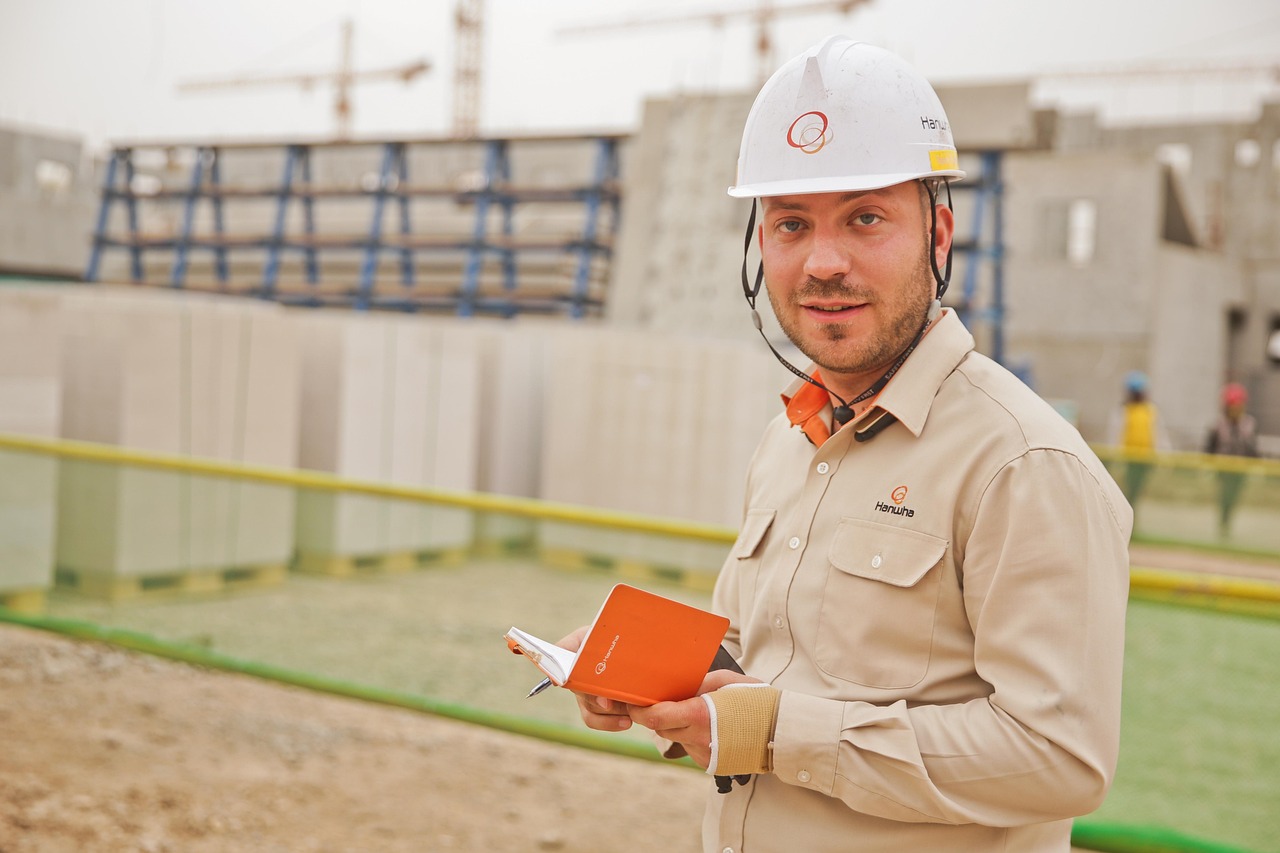What Shapes Construction Work in Qatar: Site Dynamics, Coordination Demands, and the Pace Behind Each Build
Construction activity in Qatar unfolds through a series of structured on-site processes that define how each project advances. From coordinated material handling to task sequencing and real-time adjustments, the workflow highlights the technical rhythm that keeps construction environments moving. By observing how teams synchronize their actions, how site layouts influence daily routines, and how equipment and planning interact, the article reveals the mechanics behind modern building operations. It offers a closer look at why construction settings feel both dynamic and organized, and how their internal processes shape the progress of every structure.

Qatar’s construction landscape presents unique challenges shaped by climate extremes, rapid urban expansion, and ambitious infrastructure goals. Sites across Doha and surrounding areas function as carefully orchestrated environments where multiple teams, materials, and equipment converge. The effectiveness of these operations depends on how well project managers balance logistical demands with workforce coordination and environmental constraints.
How Does Task Coordination Work in Multi-Stage Building Processes?
Construction projects unfold through distinct phases, each requiring precise sequencing to prevent delays and cost overruns. Foundation work must complete before structural framing begins, while mechanical and electrical installations follow specific staging protocols. In Qatar’s climate, scheduling becomes particularly complex as outdoor work during summer months requires adjusted shift patterns and hydration protocols.
Project managers utilize digital planning tools to map dependencies between trades. Concrete pouring schedules coordinate with curing times and inspection windows. Steel erection teams work in tandem with welding crews, while finishing trades await structural completion. Communication systems link site supervisors with subcontractors, ensuring each phase transitions smoothly. Daily briefings address progress bottlenecks, weather impacts, and equipment availability. This layered coordination prevents the cascading delays that occur when one trade falls behind schedule.
Large developments often employ Building Information Modeling systems that create virtual representations of construction sequences. These platforms allow teams to identify conflicts before they occur on-site, reducing rework and material waste. The integration of scheduling software with procurement systems ensures materials arrive precisely when needed, minimizing storage requirements in space-constrained urban sites.
What Drives Material and Equipment Movement in Construction Operations?
Logistics form the backbone of construction efficiency. Raw materials including cement, aggregates, rebar, and prefabricated components must flow continuously to active work zones. Qatar’s construction boom places significant demand on supply chains, requiring careful planning to avoid shortages. Tower cranes dominate skylines, lifting materials vertically while ground-level operations manage horizontal distribution through forklifts and telehandlers.
Material staging areas organize supplies by phase and location, reducing search time and handling steps. Just-in-time delivery strategies balance inventory costs against storage limitations, particularly on compact urban sites. Equipment movement follows planned routes that separate heavy machinery from pedestrian zones and active work areas. Concrete pumps position according to pour locations, while excavators and loaders follow designated pathways to prevent ground disturbance in completed sections.
Fuel management and maintenance schedules keep machinery operational throughout extended project timelines. Equipment downtime directly impacts productivity, making preventive maintenance a priority. Rental agreements for specialized machinery align with specific project phases, optimizing cost efficiency. The coordination of deliveries with site access restrictions requires advance scheduling, especially in congested urban areas where street closures and traffic management affect timing.
What Workflow Patterns Emerge on Active Construction Sites?
Daily rhythms on construction sites follow predictable patterns shaped by trade sequences and environmental conditions. Morning hours typically see peak activity as crews mobilize and equipment reaches operational status. Task assignments distribute through supervisor briefings, with safety protocols reviewed before work commences. Trade crews move through designated zones following established pathways that minimize interference between simultaneous operations.
Qatar’s extreme summer temperatures necessitate modified schedules, with intensive physical work concentrated in early morning and evening hours. Midday periods focus on indoor tasks or activities requiring less exertion. Hydration stations and shaded rest areas become essential infrastructure. Winter months allow extended outdoor work windows, accelerating project timelines when weather permits continuous operations.
Progress tracking occurs through digital reporting systems that document completed tasks, material consumption, and labor hours. Site supervisors conduct regular inspections to verify quality standards and identify emerging issues. Safety officers monitor compliance with protective equipment requirements and hazard mitigation protocols. End-of-day reviews assess achievements against planned targets, informing adjustments for subsequent shifts.
Workflow efficiency depends on eliminating bottlenecks that slow multiple trades. When plumbing installations delay drywall crews, or electrical rough-ins hold up ceiling work, project timelines extend. Experienced site managers anticipate these dependencies, building buffer periods into schedules and maintaining contingency plans for common disruptions.
How Do Environmental Factors Influence Construction Pace?
Qatar’s climate exerts significant influence over construction operations. Summer temperatures exceeding 45 degrees Celsius limit outdoor work hours and reduce labor productivity. Dust storms temporarily halt activities requiring precision or creating airborne particle risks. Humidity affects concrete curing rates and paint application windows. Project schedules account for these environmental realities, building flexibility into timelines.
Water availability for concrete mixing, dust suppression, and worker hydration requires careful resource management. Sites implement conservation measures while ensuring adequate supply for essential operations. Shade structures and misting systems create tolerable working conditions during extreme heat periods. Equipment cooling systems prevent machinery overheating that could trigger breakdowns.
Seasonal planning concentrates foundation and structural work during cooler months when productivity peaks. Interior finishing and mechanical installations shift to summer periods when enclosed spaces offer climate-controlled environments. This strategic phasing optimizes workforce efficiency across annual cycles.
What Role Does Technology Play in Modern Construction Coordination?
Digital transformation reshapes how construction sites operate. Mobile applications enable real-time communication between field teams and project offices. Drones conduct aerial surveys, monitoring progress and identifying safety hazards from perspectives impossible through ground inspection. GPS-equipped machinery provides precise positioning for excavation and grading operations.
Sensor networks track equipment utilization rates, identifying underused assets that could redeploy to other projects. Wearable technology monitors worker vital signs during extreme heat, alerting supervisors to potential health risks before incidents occur. Digital time-tracking systems streamline payroll processing while providing data on labor productivity patterns.
Cloud-based document management ensures all teams access current drawings and specifications, eliminating confusion from outdated plans. Virtual reality simulations train workers on complex procedures before they encounter actual site conditions. These technological integrations reduce errors, improve safety outcomes, and accelerate project delivery.
Conclusion
Construction operations in Qatar represent complex orchestrations of human skill, material logistics, and equipment coordination. Success depends on anticipating dependencies, adapting to environmental constraints, and maintaining clear communication across diverse teams. As projects grow in scale and complexity, the integration of digital tools with traditional construction expertise continues to refine operational efficiency. Understanding these dynamics provides insight into how Qatar’s ambitious development goals translate into tangible infrastructure that shapes the nation’s future.




